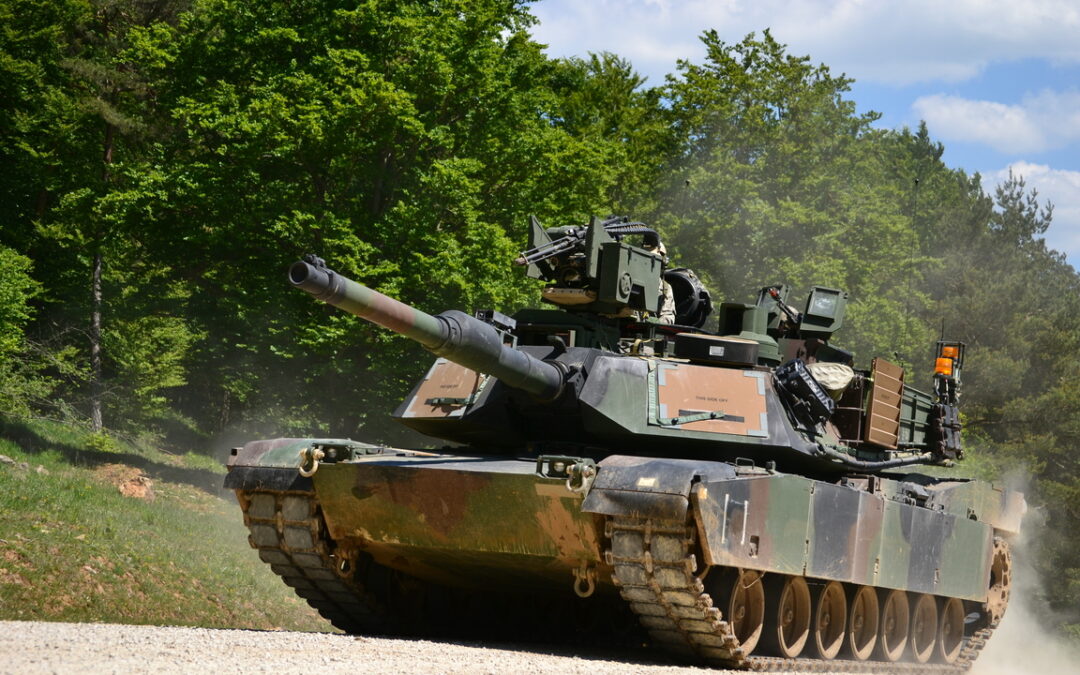By Hans Binnendijk (this article was first published by Rzeczpospolita in Polish)
Warsaw’s recent decision to buy 250 Abrams M1A2 SEPv3 tanks from the United States will contribute significantly to NATO’s deterrent posture and to the security of Poland. There are several critical reasons that make this a wise choice.
Russia today represents a formidable threat to NATO’s eastern flank. It has been modernising its military with a priority on land forces deployed against Poland and its NATO neighbours. It has added several tank and mechanised divisions to its Western Military District and has built up forces in Kaliningrad. It has gained operational military experience in Syria and Ukraine.
Moscow’s aggressive posture is on display daily, most recently with Russian President Vladimir Putin’s warning that the next Black Sea confrontation will be met with a “most severe” response and with his major buildup of forces near Ukraine’s border.
Belarus is in turmoil and NATO’s posture in the Baltic states is relatively weak. Finland and Sweden remain out of NATO. Poland is thus a centre of strength in the midst of this turmoil. It needs to remain strong for the good of NATO’s entire eastern flank.
Purchasing the best tank available is required to maintain this position of Polish military strength. I drove the original M1 tank decades ago and it was a remarkable weapon.
The advantages of that precursor tank remain: a low silhouette, versatile protective armor, speed, mobility, stability, and a highly accurate fire control system. That tank helped the United States easily defeat Iraq in Desert Storm.
But this new version of the Abrams is reportedly much improved with a new more capable gun, more lethal munitions, greater protection against roadside bombs, a remotely operated machine gun, and improved ammunition data links. It was specifically designed to better the modern Russian T-14 Armata tank.
Poland has announced the $6 billion purchase of 250 of the latest M1A2 Abrams tanks from the US.
The new equipment will replace Soviet-era tanks and help create a greater deterrent against Russia, says Warsaw https://t.co/AoXpPf9BuQ
— Notes from Poland 🇵🇱 (@notesfrompoland) July 14, 2021
The Abrams M1A2 SEPv3 is so new to the American inventory that in 2022, Poland will receive tanks before many US Army units have it. That makes sense for the United States because of Poland’s front line status. It will replace Poland’s old Russian T-72s and PT-91s and give Poland a strong combined tank force of top-of-the-line American and German tanks.
A strong Polish defence capability is central to NATO’s deterrent posture. Since Russia’s annexation of Crimea in 2014, NATO has moved steadily in several steps to enhance deterrence.
It began by strengthening its rapid response capability. Then it deployed four battalion-sized NATO battle groups to forward positions in the Baltic states and Poland. Next the United States strengthened its own military position in Poland. Finally the Alliance initiated both readiness and mobility initiatives that are currently being implemented. The Abrams tank sale is part of this broader effort.
This entire NATO deterrent structure in northeast Europe is premised on the fact that NATO front line forces should be able to hold that line against an initial military attack until reinforcements arrive. Russia has time and distance advantages over NATO’s main reinforcement force, so the mission of forward deployed forces is not easy.
More needs to be done. Front line forces cannot be just a trip wire for maximum deterrence to occur. That is why Poland’s acquisition of these Abrams tanks and their deployment to the east is so important not just to Poland but to its NATO neighbours both to the north and south. It will help front line forces hold that line for the crucial time require for NATO reinforcements to arrive.
The longer those front line forces can hold on, the more credible the overall NATO deterrence will be. The risk of a Russian miscalculation thus declines and Poland is safer.
The United States understands this deterrent concept. That is why with bipartisan support the United States has command of the NATO battle group in Poland. That is also why Washington upgraded its presence in Poland under President Trump, a move that is supported by President Biden.
The presence of the advance Abrams tank in Poland’s arsenal will further strengthen Poland’s interoperability with its two most important allies. The United States would bring Abrams tanks to any conflict, just as Germany would bring the Leopard 2 tanks.
With both tanks also in Poland’s arsenal, the combined tank forces of these three allies would have significant military synergies. Poland’s exercise ranges are also well suited for combined tank training, which would further improve readiness, interoperability, and deterrence.
There are also important political dimensions to this sale. Washington has invested heavily in Poland’s defence. The United States remains a cornerstone of NATO’s military capability and of Poland’s security. By buying the advanced Abrams, Warsaw is recognising this American commitment to Poland’s defence and is designing capabilities to operate most effectively with its principal ally.
Poland’s investment may be costly but it will not break Poland’s central defence budget. Warsaw has reportedly set aside separate funding for this tank purchase so that other defence items will not be adversely impacted.
In addition, the cost will include a package of logistics items, spares, and training that will further cement the tie between the two armies.
A few years ago I visited the wonderful old military museum in Warsaw. Its tank displays were a testament to the historic importance of land forces in Poland’s defensives. That historic lesson needs to be remembered as Washington and Warsaw proceed with this arms deal.
Main image credit: 7th Army Training Command/Flickr (under CC BY 2.0)





















